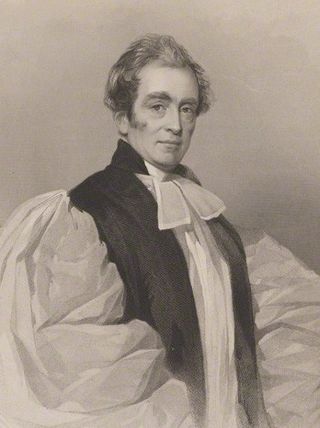
Henry Phillpotts, often called "Henry of Exeter", was the Anglican Bishop of Exeter from 1830 to 1869. One of England's longest serving bishops since the 14th century, Phillpotts was a striking figure of the 19th-century Church.

Richard Porson was an English classical scholar. He was the discoverer of Porson's Law. The Greek typeface Porson was based on his handwriting.
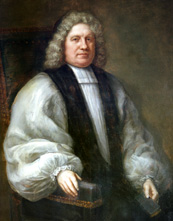
Narcissus Marsh was an English clergyman who was successively Church of Ireland Bishop of Ferns and Leighlin, Archbishop of Cashel, Archbishop of Dublin and Archbishop of Armagh.

Sir Jonathan Trelawny, 3rd Baronet was Bishop of Bristol, Bishop of Exeter and Bishop of Winchester. Trelawny is best known for his role in the events leading up to the Glorious Revolution which are sometimes believed to be referenced in the Cornish anthem "The Song of the Western Men".

Josiah Tucker, also known as Dean Tucker, was a Welsh churchman, known as an economist and political writer. He was concerned in his works with free trade, Jewish emancipation and American independence. He became Dean of Gloucester.
St Merryn is a civil parish and village in north Cornwall, England, United Kingdom. It is about 3.5 miles (5.6 km) south of the fishing port of Padstow and 11 miles (18 km) northeast of the coastal resort of Newquay.
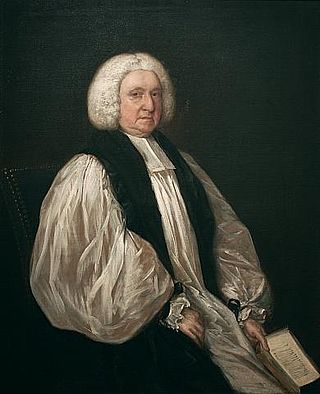
George Lavington was Bishop of Exeter from 1746 to 1762.
Richard Polwhele was a Cornish clergyman, poet and historian of Cornwall and Devon.
Events from the year 1713 in Great Britain.

Sir John Trelawny, 4th Baronet, of Trelawne in Cornwall, was a Cornish politician who sat in the House of Commons from 1713 to 1734. Trelawny was the eldest son of Sir Jonathan Trelawny, 3rd Baronet and his wife Rebecca Hele, daughter of Thomas Hele of Bascombe, Devon. His father was Bishop of Bristol, Bishop of Exeter and Bishop of Winchester. He matriculated at Christ Church, Oxford on 26 January 1708. He married Agnes Blackwood daughter of Thomas Blackwood of Scotland. He succeeded his father in the baronetcy on 19 July 1721.
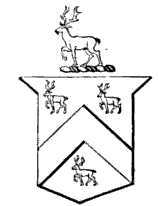
John Rogers was an English Anglican priest, mine-owner, botanist, mineralogist, and scholar of Hebrew and Syriac.
Edward Budge (1800–1865) was an English theologian, geologist, and general writer.
John Upton was an English clergyman, academic and critic. An important early editor of Edmund Spenser, he is best known for the notes in his 1758 edition of Spenser's great romance epic The Faerie Queene, which was first published in 1590 and 1596.
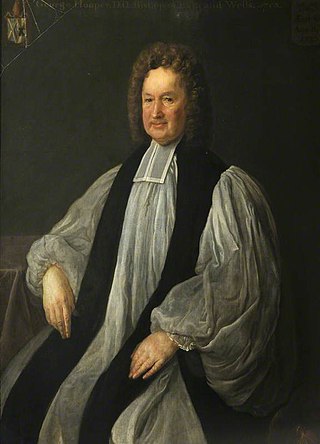
George Hooper was a learned and influential English High church cleric of the late seventeenth and early eighteenth centuries. He served as bishop of the Welsh diocese, St Asaph, and later for the diocese of Bath and Wells, as well as chaplain to members of the royal family.

Archibald Robertson was the seventh Principal of King's College London who later served as Bishop of Exeter.

St Martin-by-Looe is a coastal civil parish in south Cornwall, England, United Kingdom. The parish is immediately east of the town and parish of Looe, seven miles (11 km) south of Liskeard. The parish is in the Liskeard Registration District and the population in the 2001 census was 321, which had increased to 429 at the 2011 census.
William Worth (1677−1742), was a classical scholar and divine.

John Sterne (1660–1745) was an Irish Church of Ireland clergyman, bishop of Dromore from 1713 and then bishop of Clogher from 1717.
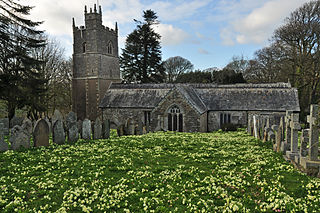
St Martin's Church is a parish church in the hamlet of St Martin, Looe, Cornwall, in the Church of England Diocese of Truro.
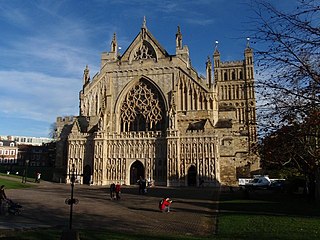
Nicholas Marston was a 16th century English priest. It is uncertain whether his appointment as Archdeacon of Cornwall in 1574 took effect. He was one of three brothers, who had ecclesiastical careers in the Cathedral church of Exeter, and in that diocese within Cornwall and Devon. Their father was a wealthy citizen Haberdasher in the city of London who gave financial support to the early career of his wife's brother William Bradbridge, later bishop of Exeter. Thomas's daughters made advantageous City marriages, and the network of their mercantile patronage and relations with the bishops, deans and chapters of Exeter and of Bath and Wells, and with the University of Oxford, spanned several decades of the Tudor and early Stuart period.













